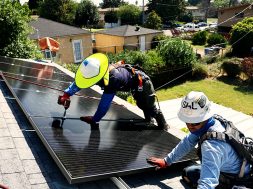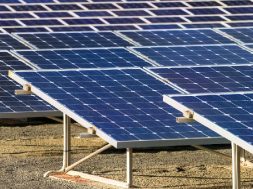
10 Predictions for Rooftop Solar in 2017
I got lucky with my predictions for rooftop solar in 2016 — pretty much on target with nine out of the 10 darts that I threw. But this year is shaping up to be much more challenging, with routine solar-coaster turmoil combined with political uncertainty. Looking forward to 2017, my list no longer includes the benefits of the Clean Power Plan and 500 million solar panels (along with the EPA and half the equity in the remaining solar module companies). Nevertheless, I remain very optimistic about the future of clean technology industries simply because their economic benefits have been proven. So here are my 10 predictions for rooftop solar in 2017.
1. Module prices will stay at current low levels, roughly 35 cents for megawatt orders, roughly 45 cents for container quantities and roughly 55 cents for small orders. Manufacturers prefer to operate their production lines at full capacity (and full employment), even if they are selling at breakeven or less. As the year progresses, these low prices will apply to higher and higher efficiency modules. Differentiated modules — those with integrated electronics, simplified installation technology or 20+ percent efficiency — will command higher price points and margins simply because they provide more value to installers and homeowners.
2. U.S. solar manufacturing will continue to decline. Sadly, the module supply chain is almost entirely from Asia: wafers, cells, backsheets, EVA, junction boxes, glass and aluminum frames are all cheaper in China with comparable quality. Political rhetoric will not bring manufacturing back without a good plan to address the supply of key components in the U.S. Ironically, tariffs have made things much worse for U.S. manufacturers — removing tariffs on cells and extruded aluminum for solar would go a long way toward improving the economics for the remaining U.S. module manufacturers.
3. Community solar will struggle to get traction. Customers want both clean and cheap solar power. But when community solar is developed by utilities, they charge a premium for solar, so customers don’t buy. When lower per kilowatt-hour cost community solar projects are developed independently, utilities act to delay projects or increase costs in order to protect their monopoly. More local governments will step in with community-choice Aggregation programs. These CCA programs break the utility electricity sales monopoly, providing clean and cheap power to customers.
4. State solar organizations will gain membership and influence throughout the U.S. as net energy metering and rate design issues are tackled by state public utility commissions. Meanwhile, the Solar Energy Industries Association will fight a rear-guard action in Washington, D.C. to preserve the most precious TLAs (three-letter acronyms): ITC, DOE and EPA.
5. The TLA for 2017 is “BTM.” The divide between utility-scale solar and behind-the-meter (BTM) solar will become more apparent as the zero-sum game for selling electricity intensifies. The cost difference between utility PPAs (about $0.04 per kilowatt-hour) and customer-owned residential solar (about $0.06 per kilowatt-hour) will continue to narrow, eliminating the argument that bigger is better when it comes to solar deployments.
6. Small local and medium-sized regional rooftop solar companies will continue to thrive. Bigger is badder in the solar business. Companies that use debt to claw to the top of the revenue hill are inevitably knocked off and out. Stubbornly high customer-acquisition costs will make it cost-prohibitive for any installation company to pursue a fast growth strategy without outside investors. More simplified solar financing options will become available to small and medium-sized installers — and companies providing these independent financing products will thrive. Meanwhile, high-pressure sales installers/deal originators who were hooked on no-money-down financing and naive customers will discover they have no referral business and cannot continue to pay high customer-acquisition costs.
7. Utility deployments of battery storage system will grow rapidly in the U.S. Trial programs will drive this initial demand, and income from rate-basing these installations will improve the bottom lines of utilities and vendors. Meanwhile, customers will see zero impact other than higher rates. BTM energy storage systems will continue to be deployed gradually in Hawaii and to a lesser degree in California. Residential BTM deployments need better economic drivers (lower equipment costs, incentives and even demand charges) before deployments begin to take off. BTM energy storage systems are still at the stage that rooftop solar was in 2000.
8. Customers will not install technology that provides services to utilities — even if products are free with a small return value stream — because utilities will not make the value stream significant enough. Customers learned their lessons with smart meters: cool technology that benefits utilities tends to raise rates, provides negligible access to customer data, and enables customer-unfriendly services (demand charges and dynamic TOU rates). As we saw with rooftop solar and smart thermostats, customers would rather invest in energy-saving technology themselves and follow price signals to reap the benefits. On the other hand, utilities prefer to build this infrastructure and rate-base these investments — thereby guaranteeing a profit. Utilities and PUCs like the intellectual concept of distributed energy resources, but the value to customers is too low and intangible, especially when customers can invest in similar technology themselves.
9. Storage equipment companies will continue to underestimate the true cost of their new products in order to generate buzz and initial sales. These true costs include diverse component integration, software configuration, permitting, installation, troubleshooting and service. Companies that provide a fully integrated solution, including all required hardware and software in a single plug-and-play box, will get the most initial traction from experienced installers.
10. President Trump will embrace solar because it is cheaper and continues to be a jobs engine. He will follow in Obama’s footsteps as he welcomes a solar system on the top of his new house for the next four to eight years.
















